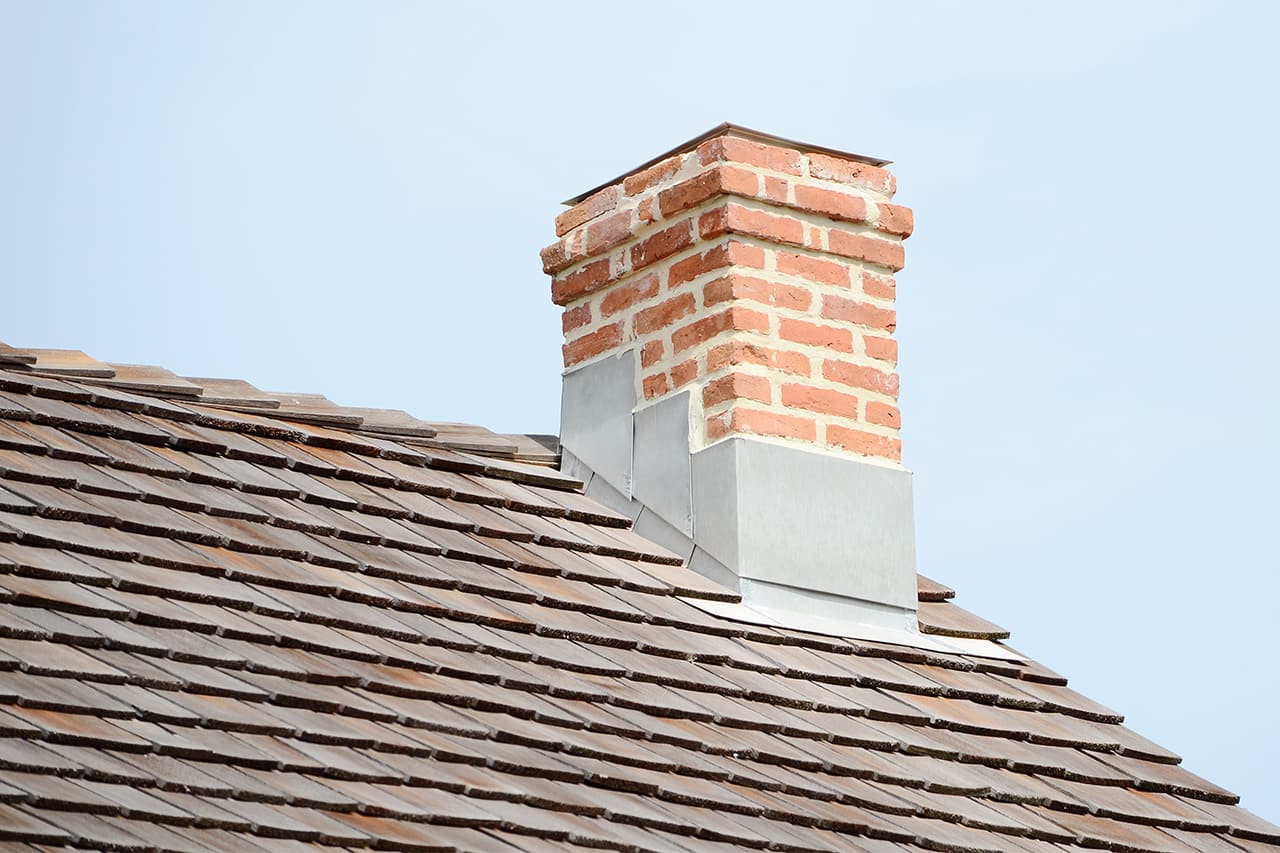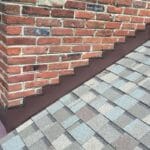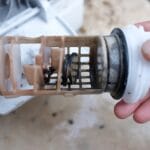Have you ever glanced at your chimney and wondered if it’s doing its job of keeping water out? You might be surprised to learn that a small part called chimney flashing plays a crucial role in this.
But what happens when it starts to wear out or needs replacing? Understanding the cost of chimney flashing can save you from headaches down the line. You’re not just safeguarding your home from potential water damage; you’re also investing in peace of mind.
We’ll dive into what affects chimney flashing costs, and how you can make informed decisions without breaking the bank. Stick around to discover how you can ensure your home remains dry, safe, and secure.
Chimney Flashing Basics
Chimney flashing is essential for a leak-free home. It seals the gap between the chimney and roof. Without it, water can enter your home. This can lead to damage. Understanding chimney flashing helps in managing costs.
Purpose Of Chimney Flashing
The main purpose of chimney flashing is to prevent water leaks. It acts as a barrier. Water can cause structural issues. Flashing keeps your home safe and dry. It ensures your roof and chimney last longer.
Materials Used In Flashing
Different materials are used in chimney flashing. Common options include aluminum, copper, and steel. Aluminum is lightweight and affordable. Copper is durable and long-lasting. Steel provides strength and is cost-effective. Each material has its benefits. Choose based on budget and needs.

Credit: www.angi.com
Factors Influencing Cost
Chimney flashing is crucial for protecting your home from water damage. The cost of chimney flashing can vary significantly. Several factors influence this cost. Understanding these factors helps in budgeting for this essential home maintenance task.
Material Choices And Their Impact
Different materials affect the cost of chimney flashing. Common materials include aluminum, copper, and steel. Aluminum is often the most affordable option. Copper is durable but more expensive. Steel offers strength and a mid-range price. Each material has its benefits and drawbacks. Choose based on budget and durability needs.
Labor Costs And Complexity
Labor costs depend on the complexity of the job. Simple installations may require less time and money. Complex jobs might involve removing old flashing. This requires more skill and time. Experience and expertise of workers also impact labor costs. Skilled workers may charge higher rates but ensure quality work.
Regional Price Variations
Costs can vary by region. Urban areas may have higher labor costs. Materials might also be priced differently based on location. Local demand can influence prices too. Areas with more competition might offer better rates. Always compare prices in your area before making a decision.
Average Cost Estimates
When you’re considering chimney flashing repair or installation, understanding the average cost estimates is crucial. Chimney flashing is essential for preventing leaks and protecting your home from water damage. But how much should you expect to pay? Let’s break down the costs involved, so you can make an informed decision without any surprises.
Cost Breakdown By Material
Did you know that the material you choose for your chimney flashing can significantly impact the cost? Aluminum is a popular choice due to its affordability. You might find prices ranging from $200 to $500 for aluminum flashing. If you prefer a more durable option, copper could be the way to go, though it might set you back between $700 and $1,200. Each material has its pros and cons, so think about your budget and long-term goals.
Typical Labor Charges
Labor costs are another important factor to consider. The complexity of your chimney’s design can affect the price. Simple installations might cost around $300 to $400. On the other hand, if your chimney is more intricate, you could be looking at charges upwards of $600. Ask yourself: Is the peace of mind worth a higher upfront cost?
Choosing the right professional can make all the difference. You want someone who can get the job done right without cutting corners. Maybe you’ve heard stories from friends who ended up paying double because of poor workmanship. Don’t let that be your story. Research and invest wisely.
Remember, the cheapest option isn’t always the best. Consider the total investment, including materials and labor. What’s your priority—saving money now, or avoiding costly repairs later? Your decision could impact your home’s safety and your wallet.

Credit: pitchroofing.com
Budgeting Tips
Estimating chimney flashing costs can save money on home repairs. Consider material types and labor fees. Research local prices for a better budget plan.
Budgeting for chimney flashing costs can feel overwhelming, especially if you’re not sure where to start. However, with the right strategies, you can manage expenses without breaking the bank. By focusing on accurate quotes and planning for future maintenance, you can ensure your chimney remains in top condition without unexpected financial stress.Getting Accurate Quotes
Getting an accurate quote is crucial for budgeting effectively. When my chimney needed flashing repairs, I learned the hard way that not all quotes are created equal. Contact multiple contractors to compare prices. This way, you can spot any outliers and get a sense of the average cost in your area. Always ask for a detailed breakdown of the costs. This should include labor, materials, and any additional charges. A transparent quote will help you avoid surprises later. Don’t hesitate to ask questions. Clarify any doubts about the services included in the quote. Your understanding of what you’re paying for is essential.Planning For Maintenance
Regular maintenance can save you a significant amount in the long run. Skipping maintenance might seem like an easy way to cut costs, but it often leads to more expensive repairs later. Set aside a small amount each year for chimney maintenance. This proactive approach can prevent damage and keep your chimney functioning efficiently. Consider creating a maintenance schedule. This helps ensure you don’t forget necessary inspections or repairs. It’s easy to let these tasks slip by, but a schedule keeps you accountable. How do you prioritize maintenance in your home budget? Sharing your strategies can inspire others to take a proactive stance on home care. Incorporating these budgeting tips can make managing chimney flashing costs less daunting. By focusing on accurate quotes and regular maintenance, you can protect both your chimney and your wallet.Diy Vs. Professional Installation
Installing chimney flashing can be tricky. Many people wonder if they should do it themselves or hire a professional. Both options have benefits and drawbacks. Understanding these can help make a better choice.
Pros And Cons Of Diy
Doing it yourself can save money. You won’t pay for labor. It’s a good choice for those with experience in home repairs. DIY projects can be satisfying too. Completing a project brings a sense of achievement.
But there are risks. Without proper skills, mistakes can happen. This might lead to leaks or damage. Repairs could then cost more than hiring a professional initially. Safety is another concern. Climbing roofs can be dangerous without the right equipment.
Advantages Of Hiring Professionals
Professionals have expertise. They know how to install chimney flashing correctly. Their skills reduce the chance of mistakes. Hiring them ensures a job well done. They also have the right tools for the job.
Time is saved too. Professionals work faster. They manage unexpected issues with ease. Safety is another advantage. Trained workers take necessary precautions. Their experience reduces the risk of accidents.
Long-term Cost Considerations
When considering the costs of chimney flashing, it’s essential to think beyond the immediate expenses. The long-term cost considerations can have a significant impact on your home value and future maintenance costs. Understanding these factors can save you money and preserve the integrity of your home.
Impact On Home Value
Chimney flashing is more than just a protective measure; it can influence your home’s market value. A well-maintained chimney with quality flashing reassures potential buyers about the home’s upkeep. If you’ve ever searched for a new home, you know how comforting it is to see signs of care and maintenance.
Conversely, neglecting chimney flashing can lead to leaks and water damage, which can decrease your home’s value. Buyers might see this as a costly repair they will have to handle. Would you want your home to be seen as a fixer-upper due to something as simple as flashing?
Preventive Measures For Cost Savings
Investing in high-quality chimney flashing initially can prevent costly repairs down the road. Regular inspections and maintenance can catch small issues before they become significant problems. Think about it like getting regular check-ups at the doctor to avoid bigger health issues.
Simple preventive measures, such as cleaning debris around the chimney and sealing any minor cracks, can make a big difference. This proactive approach can save you from expensive repairs and replacements. What small steps can you take today to save big tomorrow?

Credit: www.angi.com
Frequently Asked Questions
What Is Chimney Flashing?
Chimney flashing is metal sealing. It prevents water from entering between chimney and roof.
How Much Does Chimney Flashing Cost?
Chimney flashing costs $200 to $500. Price varies by materials and labor.
Why Is Chimney Flashing Important?
Flashing prevents water leaks. It protects your roof and home from damage.
How Often Should Chimney Flashing Be Replaced?
Check every 5 years. Replace if worn or damaged to avoid leaks.
Can I Install Chimney Flashing Myself?
DIY is possible. But hiring a professional ensures proper installation and durability.
Conclusion
Understanding chimney flashing costs can save you money. Proper flashing prevents leaks. It protects your home from water damage. Costs vary based on materials. Installation costs also differ. Professional help ensures quality work. Check for warranties and insurance. They offer peace of mind.
Regular inspections keep your chimney safe. Early detection of issues saves repair costs. Research and compare prices. Make informed decisions. Keep your home protected. Maintain your chimney well. It lasts longer and functions efficiently. Remember, a well-maintained chimney adds value to your home.
Prioritize your home’s safety and longevity.




